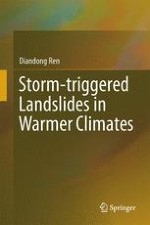2015 | OriginalPaper | Buchkapitel
12. Mathematical Skills Required to Fully Understand SEGMENT-Landslide
verfasst von : Diandong Ren
Erschienen in: Storm-triggered Landslides in Warmer Climates
Aktivieren Sie unsere intelligente Suche, um passende Fachinhalte oder Patente zu finden.
Wählen Sie Textabschnitte aus um mit Künstlicher Intelligenz passenden Patente zu finden. powered by
Markieren Sie Textabschnitte, um KI-gestützt weitere passende Inhalte zu finden. powered by
